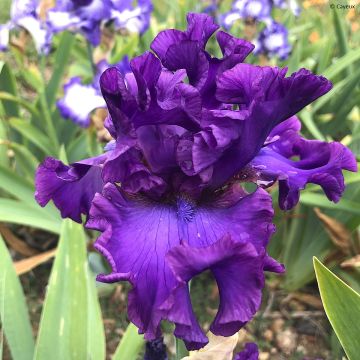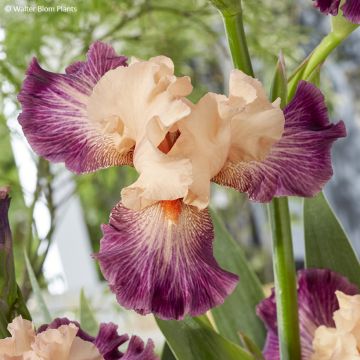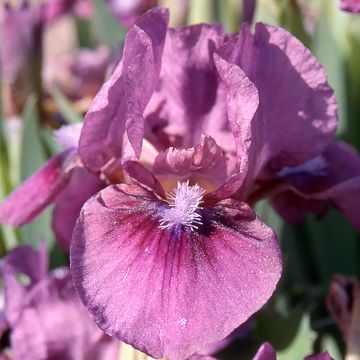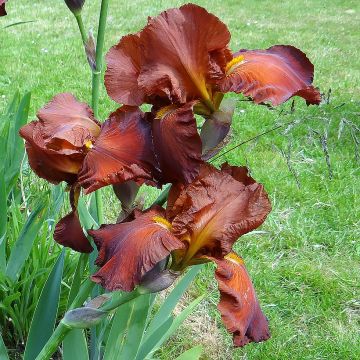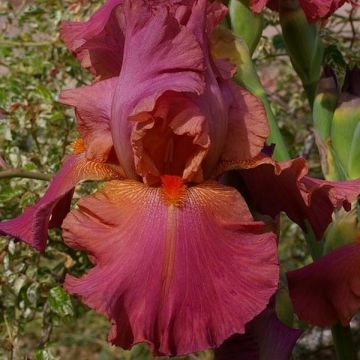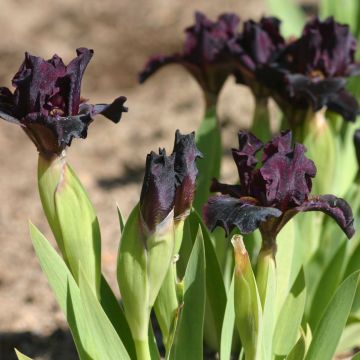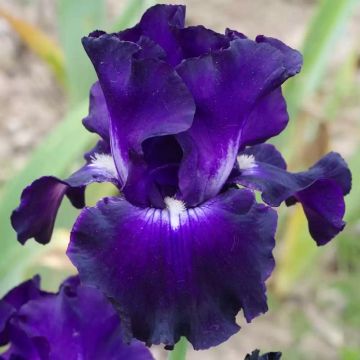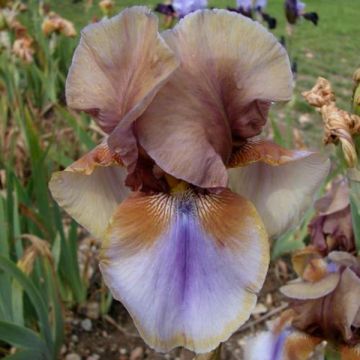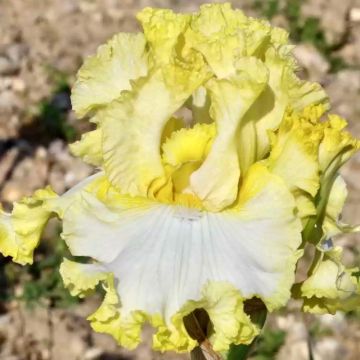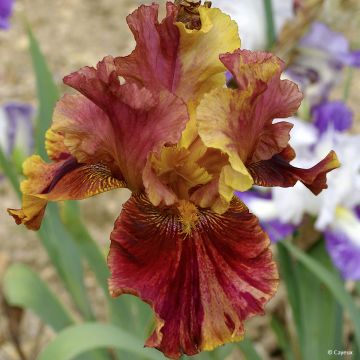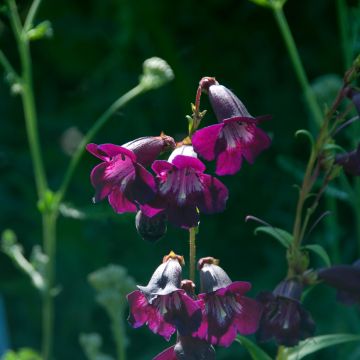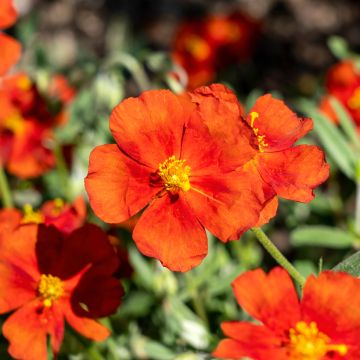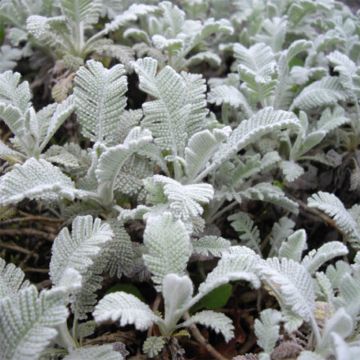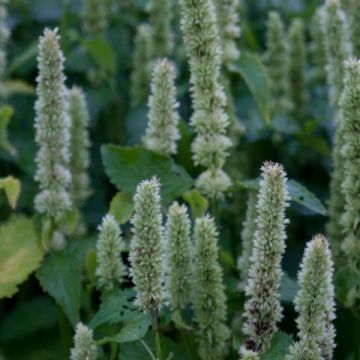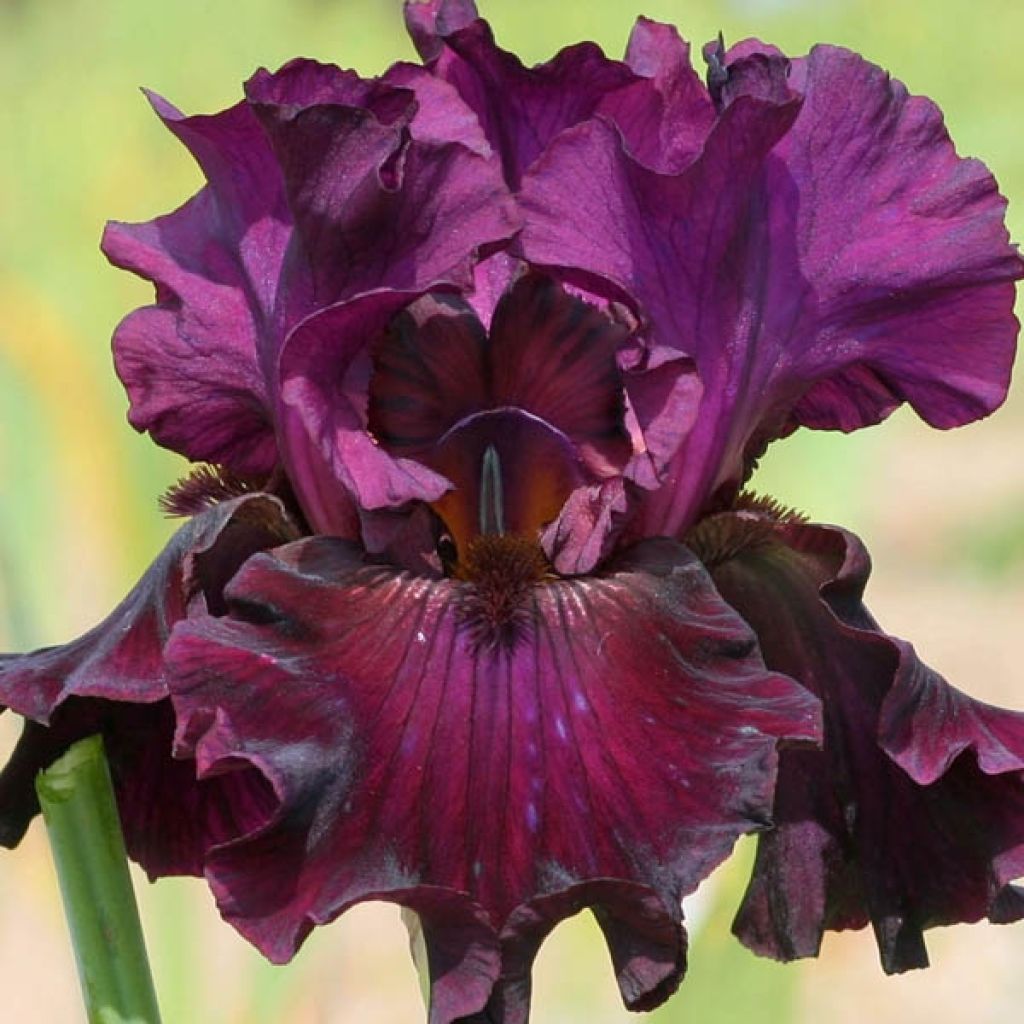

Iris Raspberry Wine


Iris Raspberry Wine
View more pictures
Hide images

Sébastien P.

Iris raspberry wine
Sébastien P. • 21 FR
Iris Raspberry Wine
Iris germanica Raspberry Wine
German Iris, Bearded Iris
Planted in autumn 2015, the first flowers bloomed in spring 2016. A deep purple color reminiscent of velvet. The stems stand over a meter tall... exceptional.
Maryline, 17/12/2016
Special offer!
Receive a €20 voucher for any order over €90 (excluding delivery costs, credit notes, and plastic-free options)!
1- Add your favorite plants to your cart.
2- Once you have reached €90, confirm your order (you can even choose the delivery date!).
3- As soon as your order is shipped, you will receive an email containing your voucher code, valid for 3 months (90 days).
Your voucher is unique and can only be used once, for any order with a minimum value of €20, excluding delivery costs.
Can be combined with other current offers, non-divisible and non-refundable.
Why not try an alternative variety in stock?
View all →This plant carries a 12 months recovery warranty
More information
We guarantee the quality of our plants for a full growing cycle, and will replace at our expense any plant that fails to recover under normal climatic and planting conditions.
Would this plant suit my garden?
Set up your Plantfit profile →
Description
The Raspberry Wine Bearded Iris has dark mauve flowers with wine-purple beards. The petals and sepals are delicately wavy.
Everyone knows the bearded or German Iris, which has become world-famous thanks to the paintings of Van Gogh and Monet. It owes its popularity to its unique design.
Its wide, sword-shaped leaves contrast with crumpled, multicoloured flowers held high. The flowers have three large upright petals and three silky, trailing sepals, called "beard" for a few weeks in May/June. This Iris has large, fleshy rhizomes creeping along the ground. It likes light, warmth, and light, well-drained soils. It doesn't mind cold or summer drought and doesn't like moisture, especially in heavy soils. Stunning in a sunny border, it is also beautiful as a cut flower.
It is very robust in full sun and in dry and well-drained soil.
Place Iris Raspberry Wine in a border or bed, alongside yarrows, alliums, stipas or roses. It is better to scatter them in groups of 3 or alone rather than creating entire iris beds.
Report an error about the product description
Iris Raspberry Wine in pictures
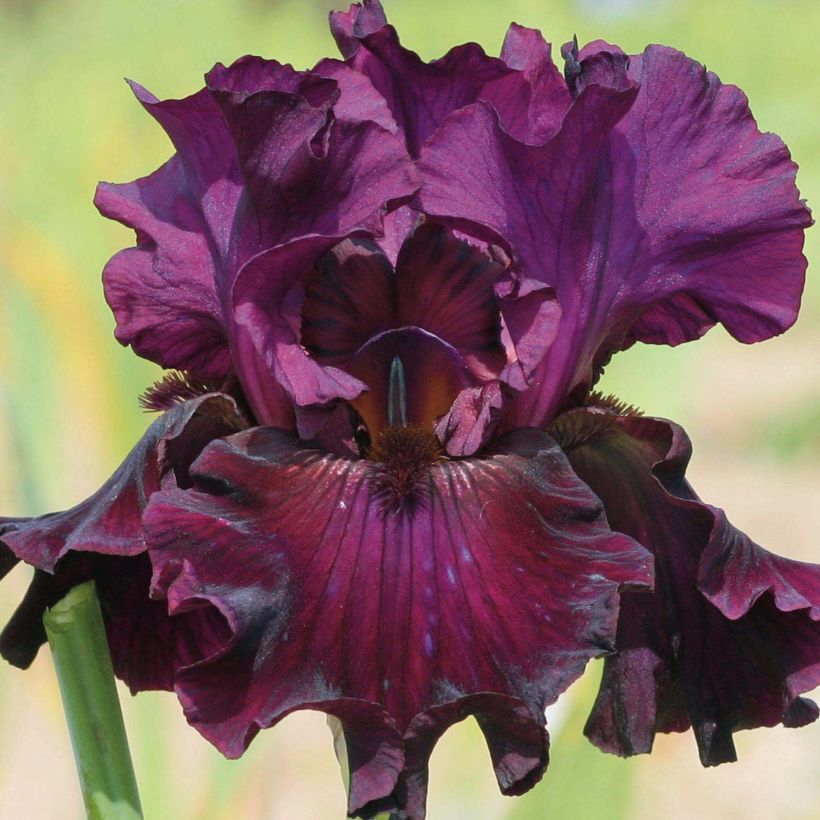

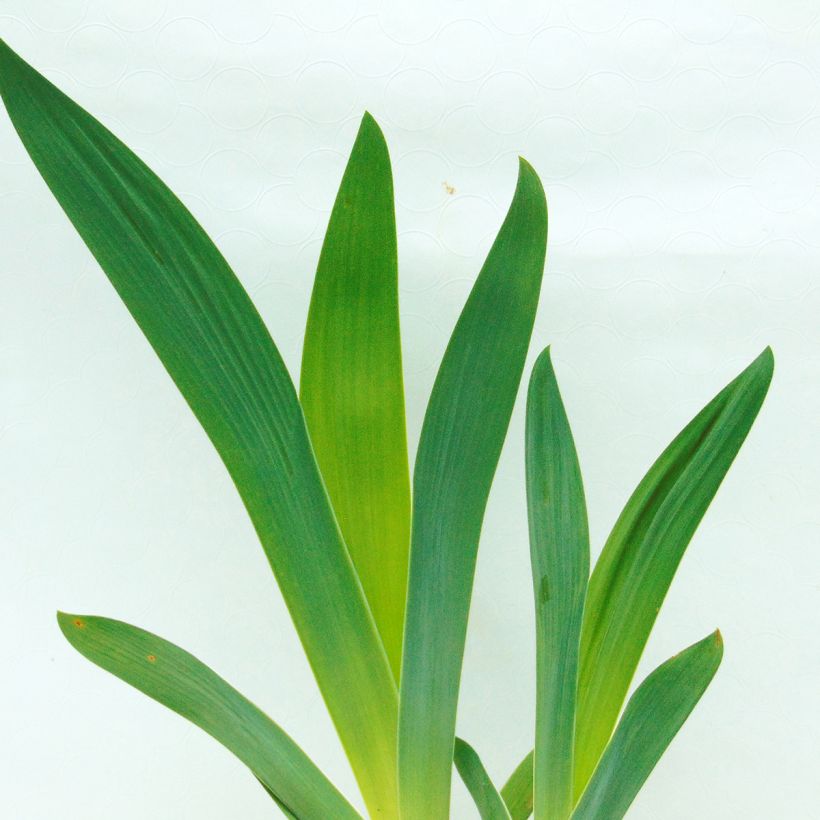

Flowering
Foliage
Plant habit
Botanical data
Iris
germanica
Raspberry Wine
Iridaceae
German Iris, Bearded Iris
Cultivar or hybrid
Other German Iris - Bearded Iris
View all →Planting and care
Iris Raspberry wine should be planted shallowly, with the rhizome exposed at ground level. Add sand if the soil is too heavy or too damp, and place the rhizomes on small mounds. Ensure good drainage so that the irises do not rot. During summer, this iris should be watered once or twice a month. After flowering, cut the flower stems to 10 cm (4in) from the ground. Damaged leaves should only be removed in autumn. It is not recommended to provide too much nitrogen as it weakens the plant and increases the number of leaves at the expense of flowers. Taller flower stalks can become brittle. The iris can be susceptible to heterosporiosis, a disease identified by oval brown spots. To prevent it, treat the irises with Bordeaux mixture at the beginning of the growing season. Divide the clumps every 4 years in summer after flowering by pulling up the entire plant. Choose the best plants from the rhizome, usually from around the edge, and transplant them to a location which has been without irises for one year.
Planting period
Intended location
Care
-
, onOrder confirmed
Reply from on Promesse de fleurs
Similar products
Haven't found what you were looking for?
Hardiness is the lowest winter temperature a plant can endure without suffering serious damage or even dying. However, hardiness is affected by location (a sheltered area, such as a patio), protection (winter cover) and soil type (hardiness is improved by well-drained soil).

Photo Sharing Terms & Conditions
In order to encourage gardeners to interact and share their experiences, Promesse de fleurs offers various media enabling content to be uploaded onto its Site - in particular via the ‘Photo sharing’ module.
The User agrees to refrain from:
- Posting any content that is illegal, prejudicial, insulting, racist, inciteful to hatred, revisionist, contrary to public decency, that infringes on privacy or on the privacy rights of third parties, in particular the publicity rights of persons and goods, intellectual property rights, or the right to privacy.
- Submitting content on behalf of a third party;
- Impersonate the identity of a third party and/or publish any personal information about a third party;
In general, the User undertakes to refrain from any unethical behaviour.
All Content (in particular text, comments, files, images, photos, videos, creative works, etc.), which may be subject to property or intellectual property rights, image or other private rights, shall remain the property of the User, subject to the limited rights granted by the terms of the licence granted by Promesse de fleurs as stated below. Users are at liberty to publish or not to publish such Content on the Site, notably via the ‘Photo Sharing’ facility, and accept that this Content shall be made public and freely accessible, notably on the Internet.
Users further acknowledge, undertake to have ,and guarantee that they hold all necessary rights and permissions to publish such material on the Site, in particular with regard to the legislation in force pertaining to any privacy, property, intellectual property, image, or contractual rights, or rights of any other nature. By publishing such Content on the Site, Users acknowledge accepting full liability as publishers of the Content within the meaning of the law, and grant Promesse de fleurs, free of charge, an inclusive, worldwide licence for the said Content for the entire duration of its publication, including all reproduction, representation, up/downloading, displaying, performing, transmission, and storage rights.
Users also grant permission for their name to be linked to the Content and accept that this link may not always be made available.
By engaging in posting material, Users consent to their Content becoming automatically accessible on the Internet, in particular on other sites and/or blogs and/or web pages of the Promesse de fleurs site, including in particular social pages and the Promesse de fleurs catalogue.
Users may secure the removal of entrusted content free of charge by issuing a simple request via our contact form.
The flowering period indicated on our website applies to countries and regions located in USDA zone 8 (France, the United Kingdom, Ireland, the Netherlands, etc.)
It will vary according to where you live:
- In zones 9 to 10 (Italy, Spain, Greece, etc.), flowering will occur about 2 to 4 weeks earlier.
- In zones 6 to 7 (Germany, Poland, Slovenia, and lower mountainous regions), flowering will be delayed by 2 to 3 weeks.
- In zone 5 (Central Europe, Scandinavia), blooming will be delayed by 3 to 5 weeks.
In temperate climates, pruning of spring-flowering shrubs (forsythia, spireas, etc.) should be done just after flowering.
Pruning of summer-flowering shrubs (Indian Lilac, Perovskia, etc.) can be done in winter or spring.
In cold regions as well as with frost-sensitive plants, avoid pruning too early when severe frosts may still occur.
The planting period indicated on our website applies to countries and regions located in USDA zone 8 (France, United Kingdom, Ireland, Netherlands).
It will vary according to where you live:
- In Mediterranean zones (Marseille, Madrid, Milan, etc.), autumn and winter are the best planting periods.
- In continental zones (Strasbourg, Munich, Vienna, etc.), delay planting by 2 to 3 weeks in spring and bring it forward by 2 to 4 weeks in autumn.
- In mountainous regions (the Alps, Pyrenees, Carpathians, etc.), it is best to plant in late spring (May-June) or late summer (August-September).
The harvesting period indicated on our website applies to countries and regions in USDA zone 8 (France, England, Ireland, the Netherlands).
In colder areas (Scandinavia, Poland, Austria...) fruit and vegetable harvests are likely to be delayed by 3-4 weeks.
In warmer areas (Italy, Spain, Greece, etc.), harvesting will probably take place earlier, depending on weather conditions.
The sowing periods indicated on our website apply to countries and regions within USDA Zone 8 (France, UK, Ireland, Netherlands).
In colder areas (Scandinavia, Poland, Austria...), delay any outdoor sowing by 3-4 weeks, or sow under glass.
In warmer climes (Italy, Spain, Greece, etc.), bring outdoor sowing forward by a few weeks.






























